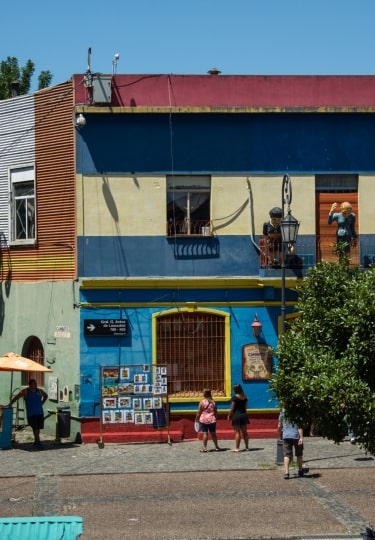Buenos Aires is one of the world’s most famous capitals, noted for its historic buildings, and romantic atmosphere of Argentine tango. With a population nearing 16 million people in the metro area, it’s still growing.
That growth has swallowed up smaller towns, such as Belgrano and Flores. These and many other places remain distinct parts of the city, which is split into 48 neighborhoods.
From the colorful La Boca to the booming Puerto Madero, each has its own character and history. Here is a guide to 10 of the very best neighborhoods in Buenos Aires to explore.
San Telmo
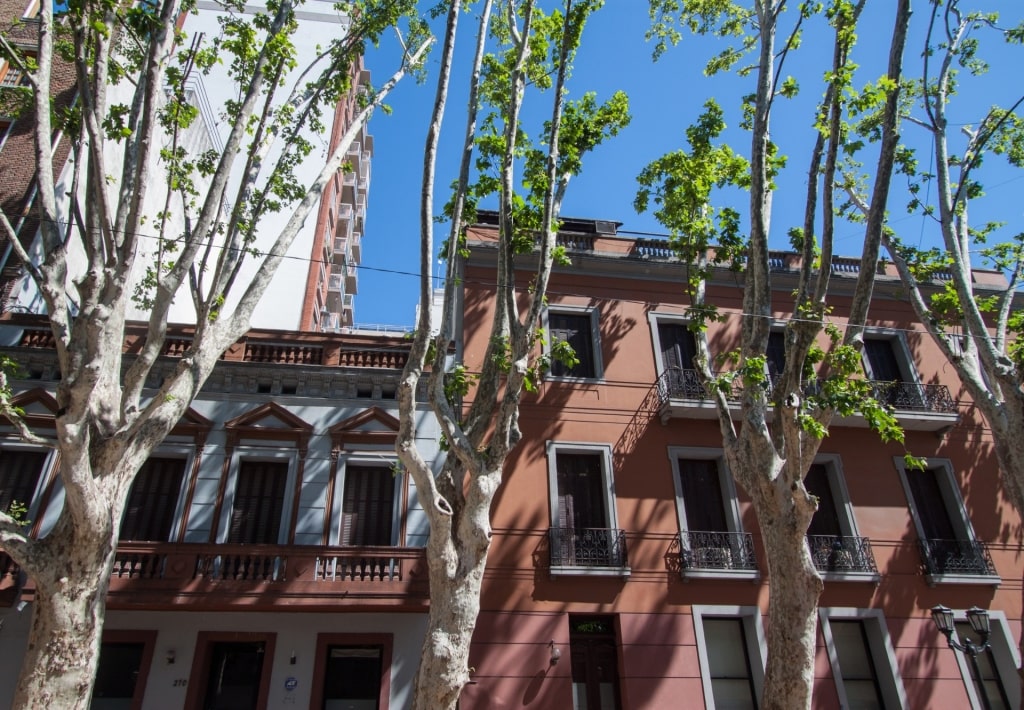
San Telmo
One of the most characterful neighborhoods in Buenos Aires, San Telmo is also the oldest. Its cheap housing once welcomed waves of immigrants, but more recently has seen it reinvented as a contemporary art district.
Originally home to dockers and industries such as brick-making, San Telmo is named for the patron saint of seafarers. Like many poor areas worldwide, it was revived by an influx of artists from the 1960s onward.
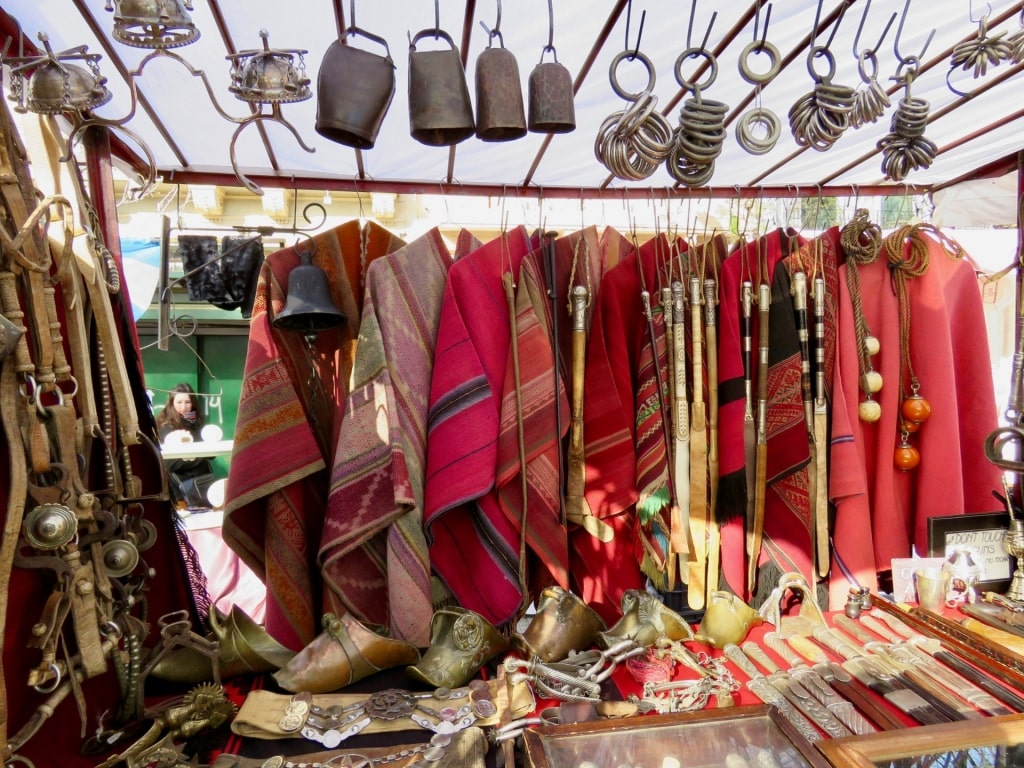
San Telmo Market
Its most famous sight is the open-air antiques market around Plaza Dorrego, which booms on Sundays. Less busy for the rest of the week, the area is now home to many antique shops and a massive indoor market.
The market brought many cafés and restaurants, great places to hang out and enjoy the atmosphere. You will also find few better places to see tango, or try it yourself.
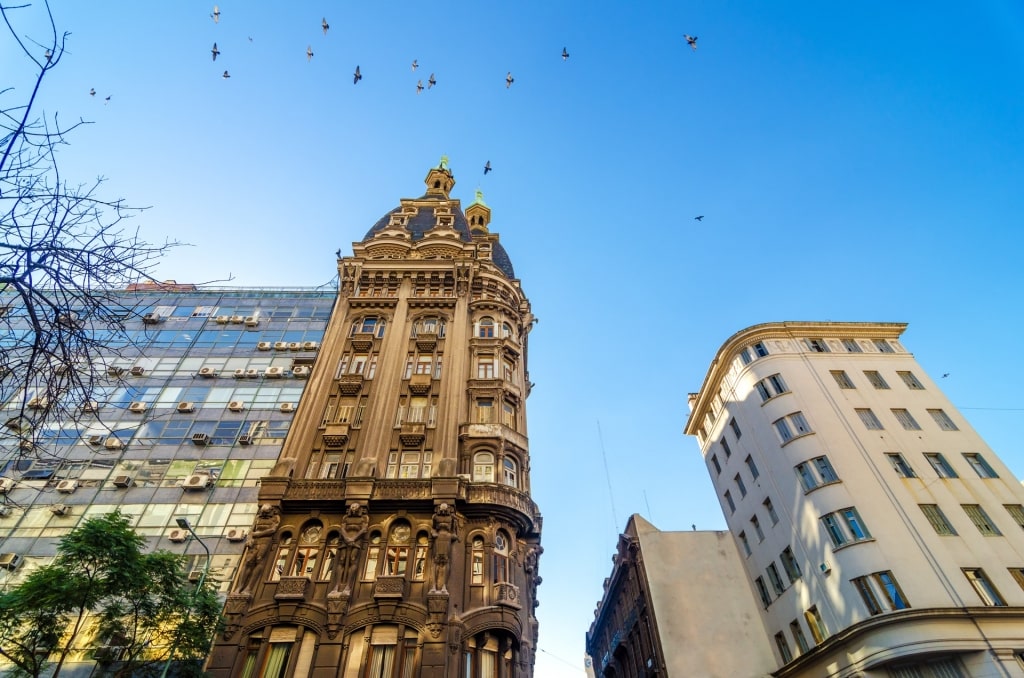
San Telmo
The city has also reinvented itself in recent decades as a center for innovative arts of all kinds. Whether that’s craft brewing, zany art, experimental music, or modern dance, you will find it in San Telmo.
La Boca
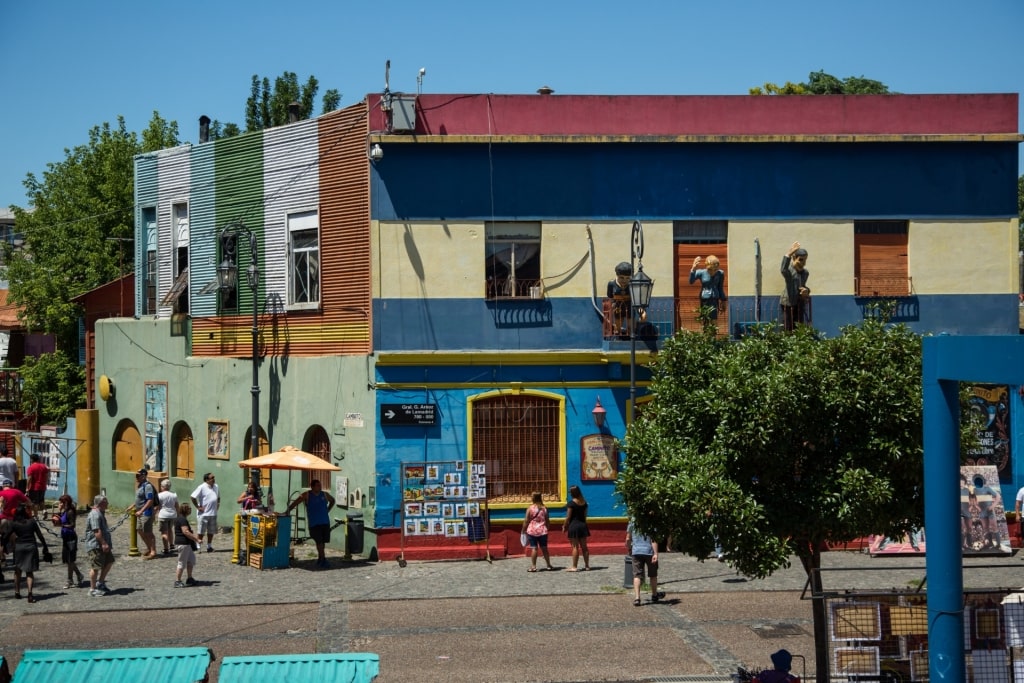
La Boca
“The Mouth” is a favorite neighborhood of artists, photographers and visitors for its colorful houses. Spreading around the port area on the river mouth, it was originally settled by Italian immigrants from Genoa and retains a distinct character.
Its most famous sight is the cobbled Caminito (“Little Street”), lined with brightly painted houses. Once a working-class area, this was transformed by the work of artist Benito Quinquela Martín in the 1950s.
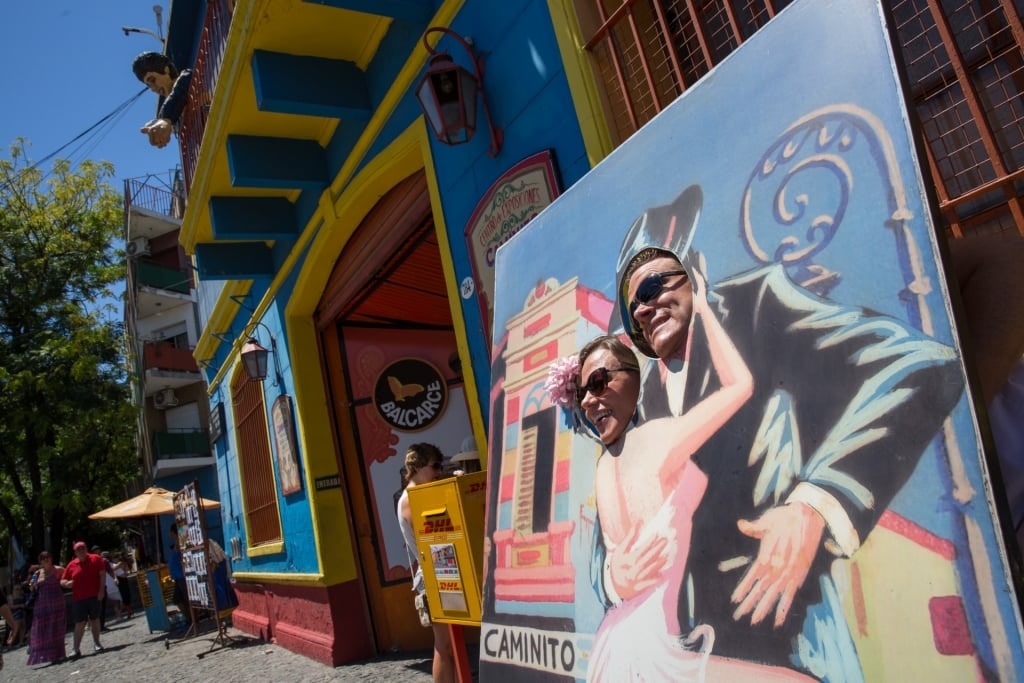
La Boca
Now it is filled with shops, galleries, cafés, and good quality restaurants that make it a favorite among couples on a South American honeymoon. You’ll also see many tango dancers, both indoors and out.
Martín was also the founder of the La Ribera Theater, which specializes in tango performances. He painted eight murals you can see in the theater, and the lobby’s piano.
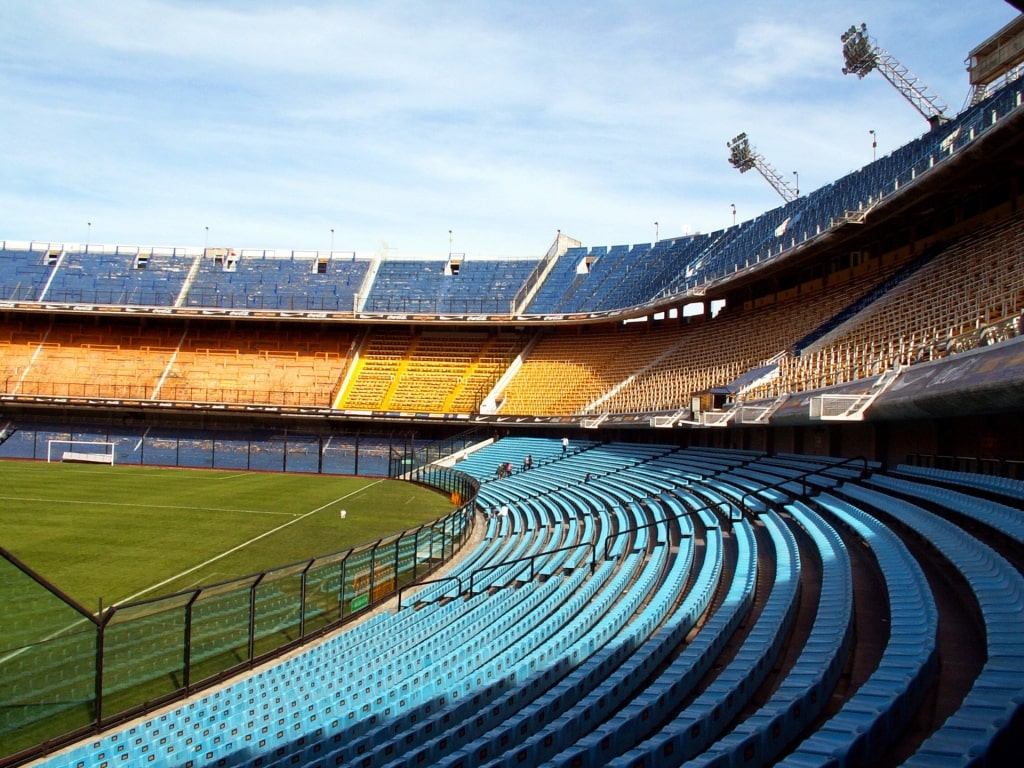
La Bombonera
La Boca’s soccer team is Boca Juniors, famous for producing players such as Diego Maradona. If you don’t have the time to see a game, you can still visit “La Bombonera”, their impressive stadium.
Microcentro: Montserrat & San Nicolas
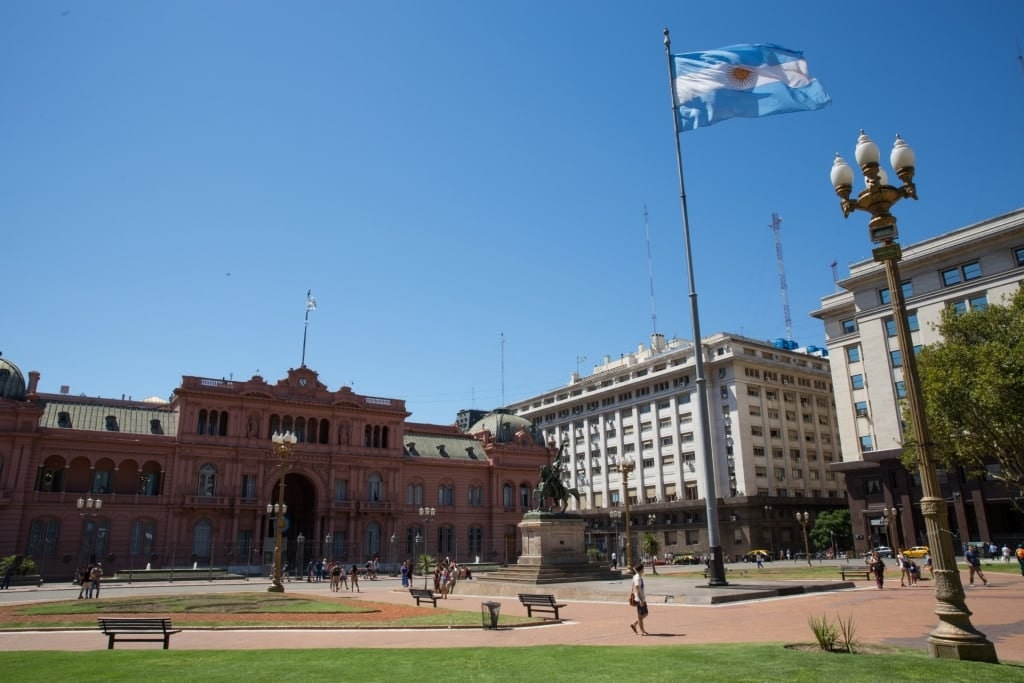
Casa Rosada, Microcentro
To see Buenos Aires as a lively capital city, rather than a visitor attraction, head to the Microcentro, home to some of the best places to visit in South America. This buzzing area is its historic, public, business, and shopping heart.
The history is found around Plaza de Mayo, site of regular demos and protests. On it stands the Casa Rosada (“Pink House”) of Evita balcony fame.
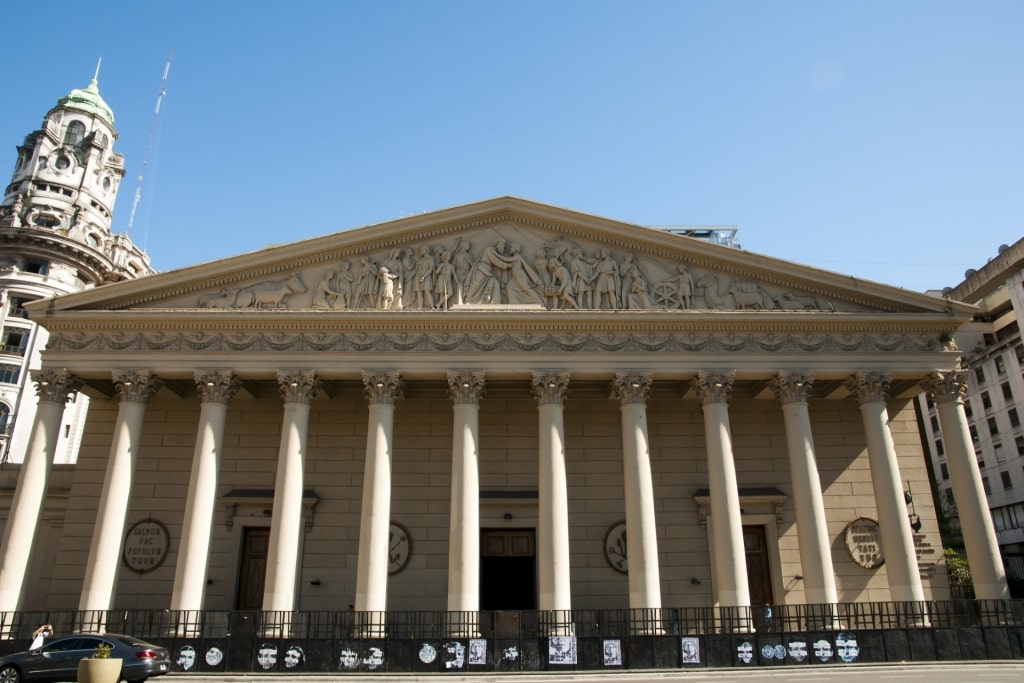
Metropolitan Cathedral, Microcentro
Nearby is the magnificent Metropolitan Cathedral, and several impressive government buildings, including the City Hall. The cathedral’s neoclassical façade hides an interior rich in Gothic and Renaissance decor.
Immerse yourself in Argentinian culture and visit Café Tortoni, the oldest café in the country. Be served by its characterful waiters while you admire the historic interior, or watch some tango.
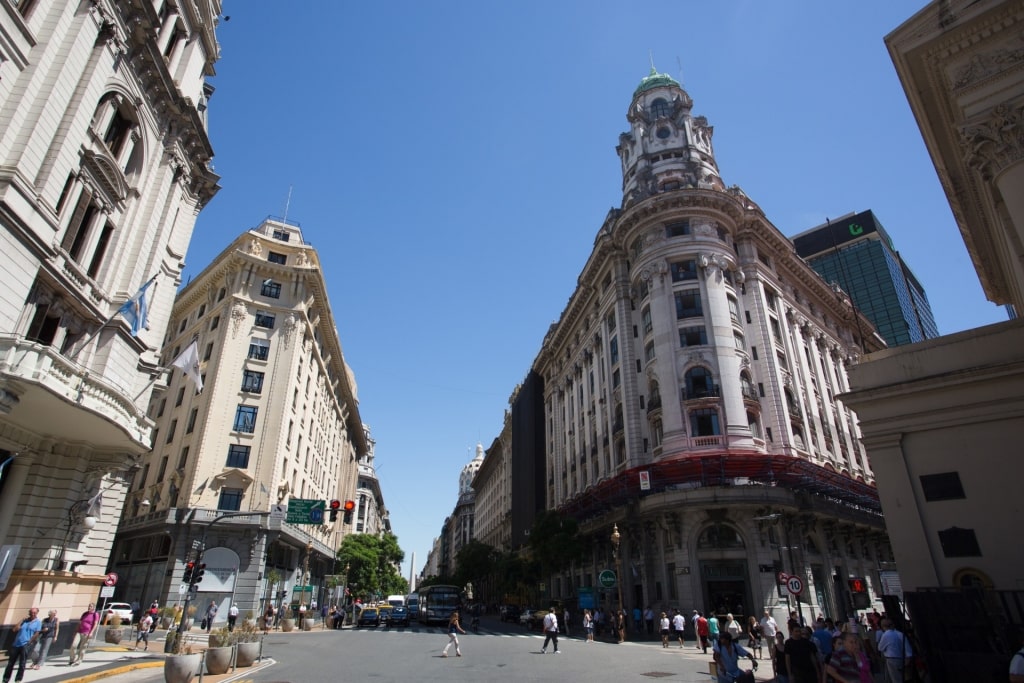
Florida Street, Microcentro
The shopping pivots on the pedestrianized Florida Street, which runs north from near Plaza de Mayo into Retiro. In this business district, the street is jammed with office workers by day, but buskers take over in the evening.
Even if none of the shops appeal to you, you’ll find many fine cafés and some great architecture, both on Florida and elegant Avenida de Mayo. Look out for the art nouveau Galería Güemes and other buildings in art deco, Beaux-Arts and the ornate Spanish Plateresque style.
Retiro
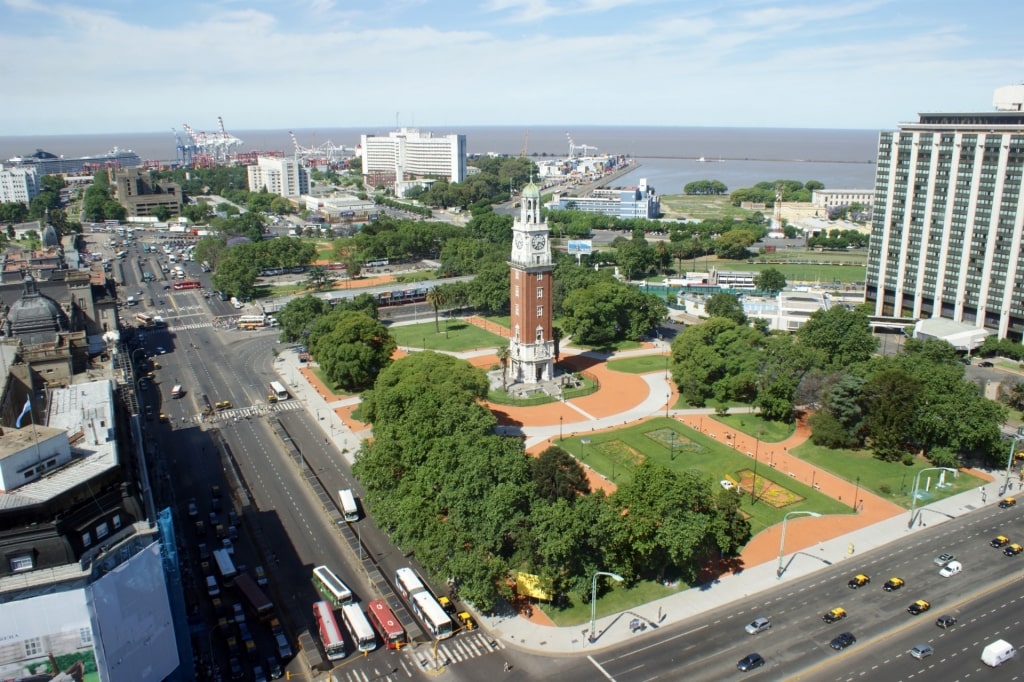
Retiro
Home to luxury hotels and grand houses, it’s fitting that this neighborhood is named after a 19th-century mansion. That mansion—long gone—stood where you now find Plaza San Martín and its massive equestrian statue of the hero of Argentina’s Wars for Independence after whom it’s named.
This wealthy area is cut by two tree-lined boulevards: Avenida del Libertador, named for San Martín again, and Avenida 9 de Julio. The latter is famous for its width—a whole city block—and the 235ft-high Obelisk de Buenos Aires.

Teatro Colón, Retiro
The neighborhood is full of magnificent buildings, from the art-deco Kavanagh Building to the historic Teatro Colón, one of the best theaters in the world. The Beaux Arts Palacio San Martin—yes, him again—is now the Foreign Relations building but tours are available.
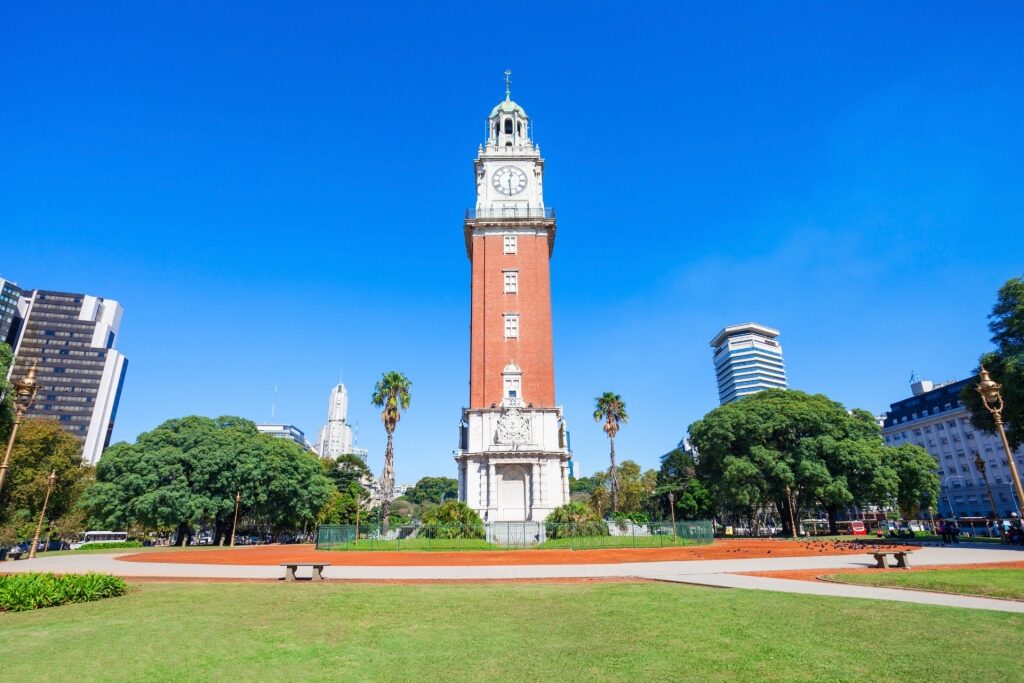
Torre Monumental, Retiro
The Estrugamou Building is a favorite of many photographers for its French Baroque style. Another must-see is the ornate Torre Monumental, which you can climb for a view of the neighborhood.
For most visitors, however, Retiro is all about luxury shopping; this is one of the best neighborhoods in Buenos Aires for retail therapy. Don’t miss Galerías Pacífico, one of the world’s most beautiful shopping centers.
Palermo
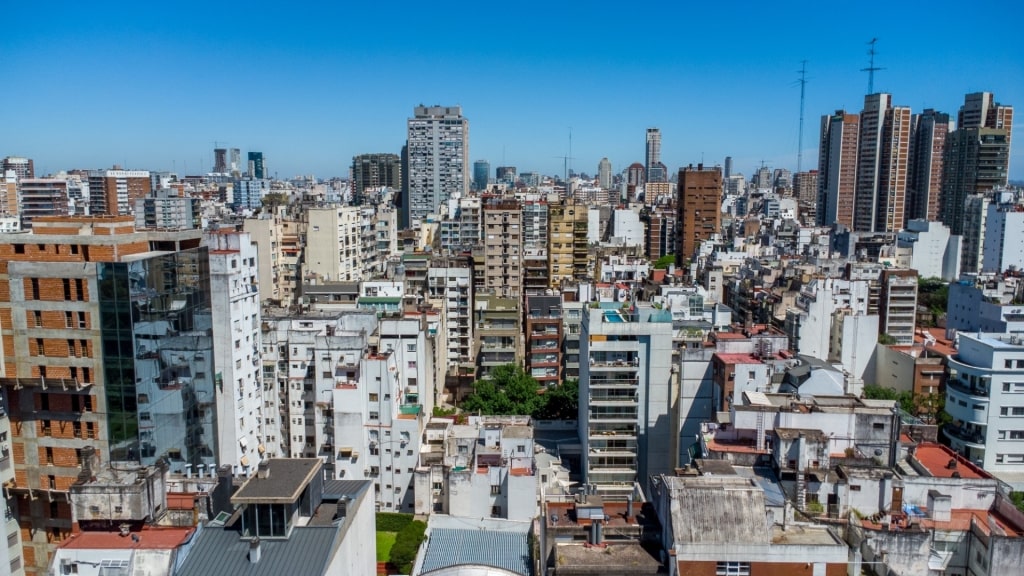
Palermo
Palermo is the biggest and wealthiest neighborhood in Buenos Aires. In fact, it may not have stopped growing, with realtors trying to bolt on its upmarket name to that of every other area nearby.
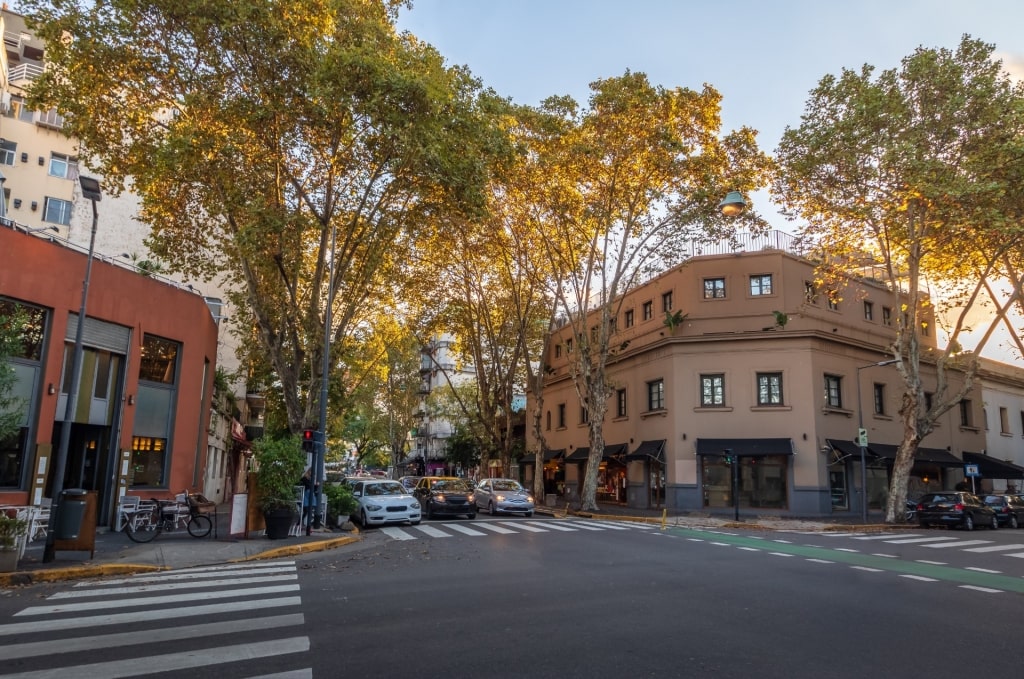
Palermo Soho
In Palermo Soho, you’ll find trendy bars and fashionable boutiques, while Palermo Hollywood is for TV studios, upmarket restaurants and nightlife.
The Alto Palermo shopping mall has given its name to a busy shopping district. And Palermo Chico is where to live if you are a celebrity, ambassador, or anyone else who needs a secluded mansion.
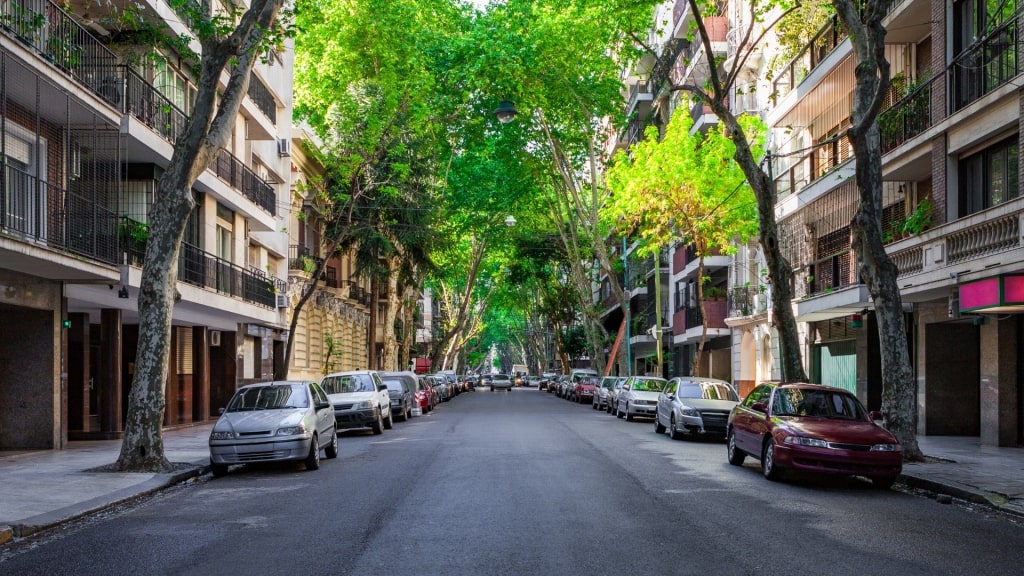
Palermo Viejo
The old center, Palermo Viejo, encompasses both Palermo Hollywood and Palermo Soho. Overall, it’s a neighborhood with some well-loved parks and avenues lined with ancient trees.
The elegant old houses are always interesting to look at as you stroll around. For a very different view, take in some of the amazing street art—even better with a local guide.
Palermo is also home to the Argentine Polo Ground, where the annual Argentine Open Polo Championship is played. The most prestigious event in world polo has been held here every year since 1893.
Puerto Madero
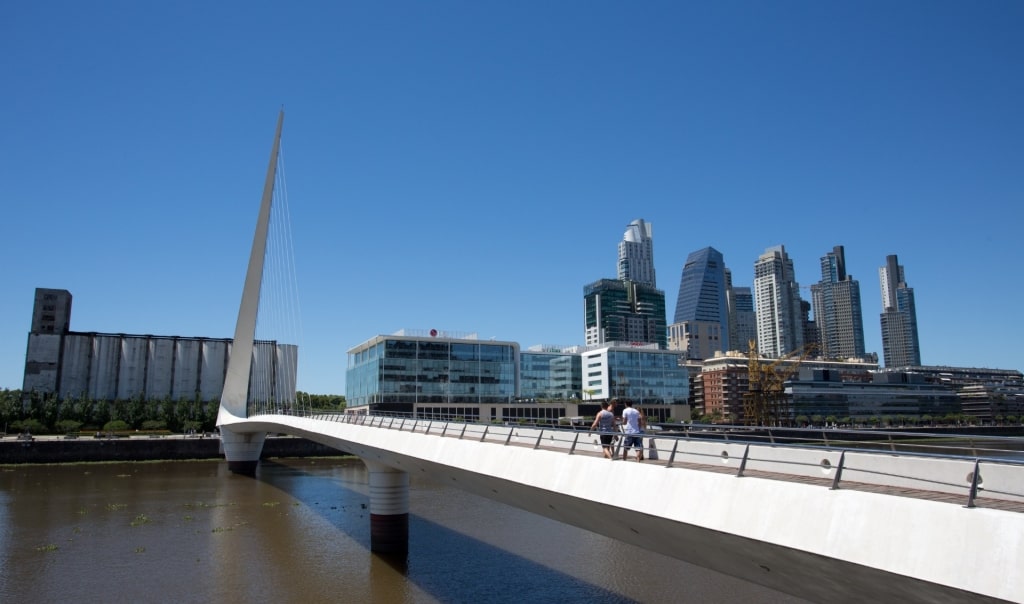
Puerto Madero
Many big cities have repurposed their old dock area into a smart high-rise apartment, hotel, office and restaurant district. In Buenos Aires, that area is Puerto Madero.
With buildings by architects such as Norman Foster, Philippe Starck and Cesar Pelli, it is unlike any other neighborhood in the city. It also stands apart for being right on the bank of the River Plate.
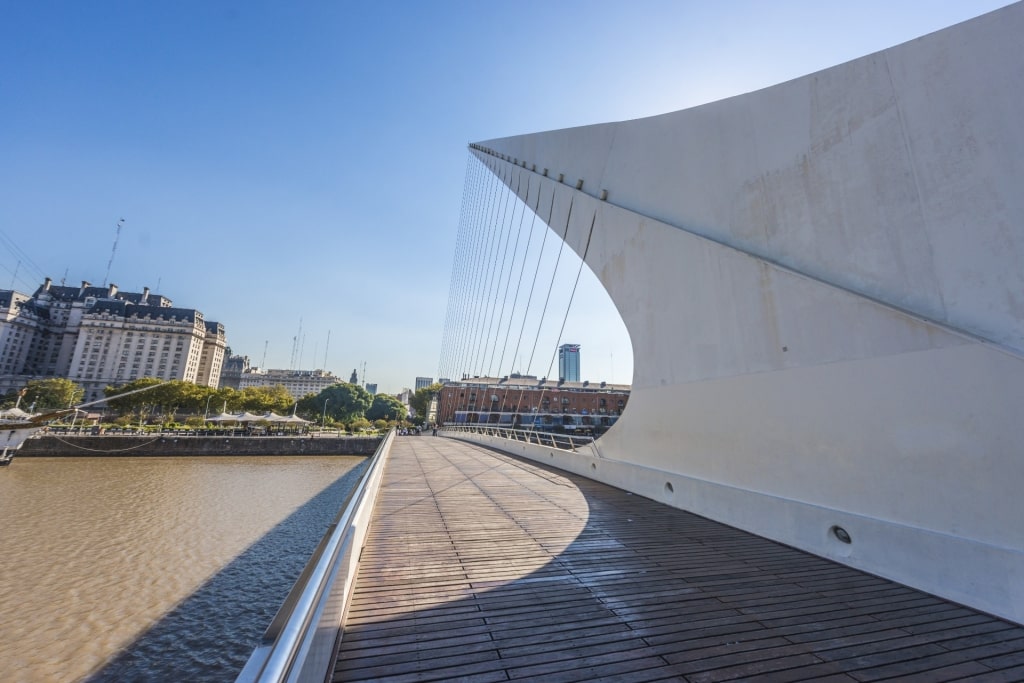
Puente de la Mujer, Puerto Madero
Every street in the district is named after women, and the striking Puente de la Mujer (Woman’s Bridge) is a major landmark. Spanish architect Santiago Calatrava’s first design in Latin America, this swing bridge represents a couple dancing tango.
For visitors, Puerto Madero is the place to find elegant restaurants and galleries such as the Faena Art Center and Colección Fortabat. The last features local artists as well as more famous names including Dali, Degas, Gauguin, Miró, and Warhol.
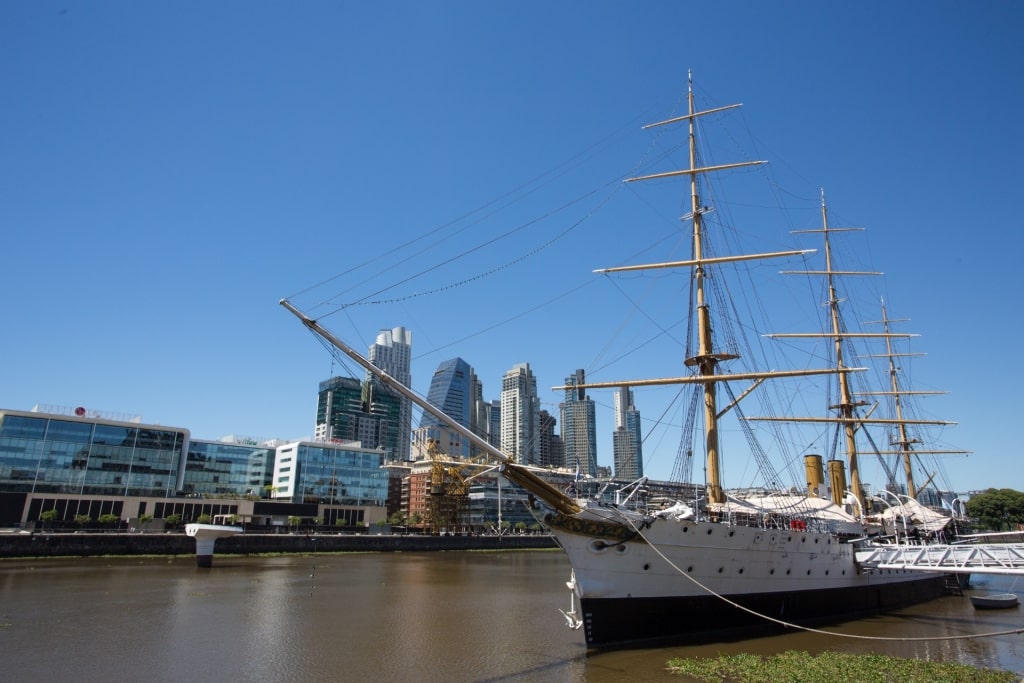
ARA Sarmiento Frigate Museum Ship, Puerto Madero
Both banks of the river are also interesting places for a stroll. Two moored sailing ships are nautical museums, and the “Walk of Glory” is a sculpture trail of local sporting heroes such as Lionel Messi and Juan Manuel Fangio.
Chacarita
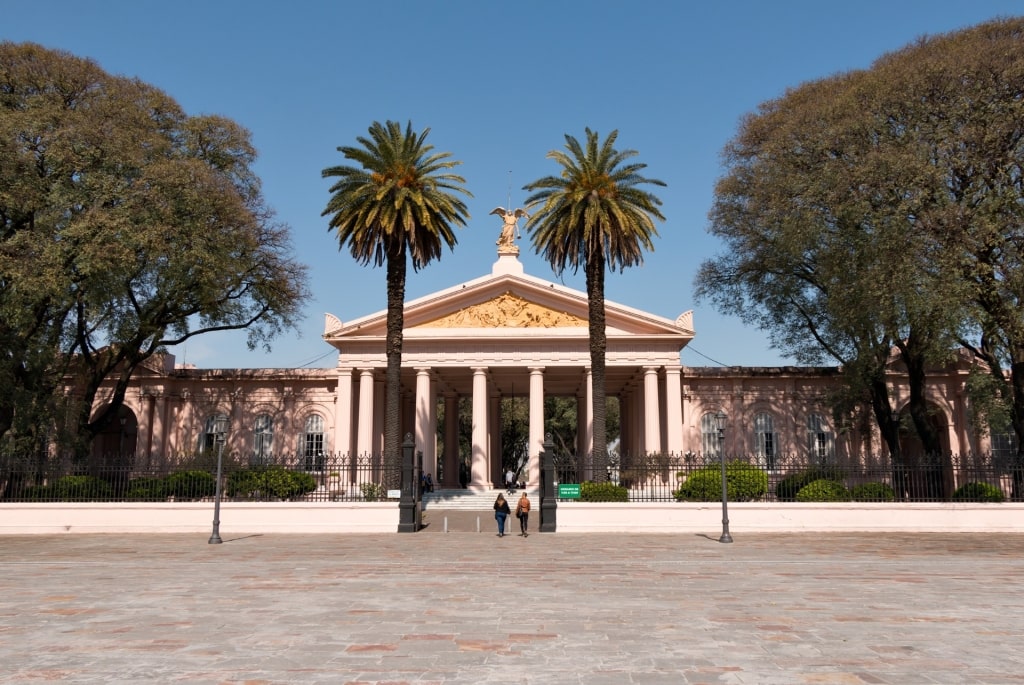
Chacarita Cemetery
If you have any interest in tango, and Carlos Gardel, you will want to visit the neighborhood of Chacarita. Gardel, born in Toulouse, raised in Uruguay but adopted by Argentina as its own, was a singer famed for his haunting tango lyrics and voice.
He is buried in the massive Chacarita Cemetery, which is 20 times larger than the more famous one in Recoleta. The neighborhood also houses the Carlos Gardel Cultural Space which is dedicated to tango in all its forms, from art exhibitions to regular dance shows.
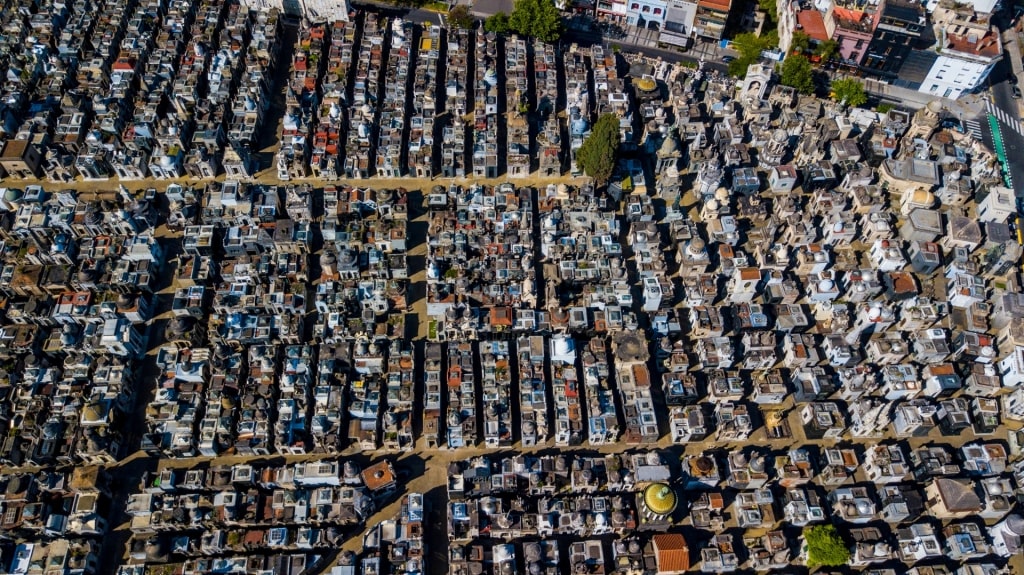
Chacarita
Chacarita was once an agricultural area belonging to the Jesuits and its name means “small farm”. After an epidemic in 1871, more city land was needed for burials and the now 250-acre cemetery was created.
Gardel died in a plane crash in 1935 and is buried in a mausoleum alongside his mother, Berta. His life-size statue is the focus of tributes from fans around the world, with many leaving a lit cigarette in its hand.
The cemetery is also home to several other tango giants. You can also see the statues of Osvaldo Pugliese on his piano, and Anibal Troilo on his bandoneon, among others.
The rest of this quiet residential neighborhood is newly booming with an influx of restaurants and upmarket shops. It’s a great place to get a feel for the “real” Buenos Aires.
Recoleta
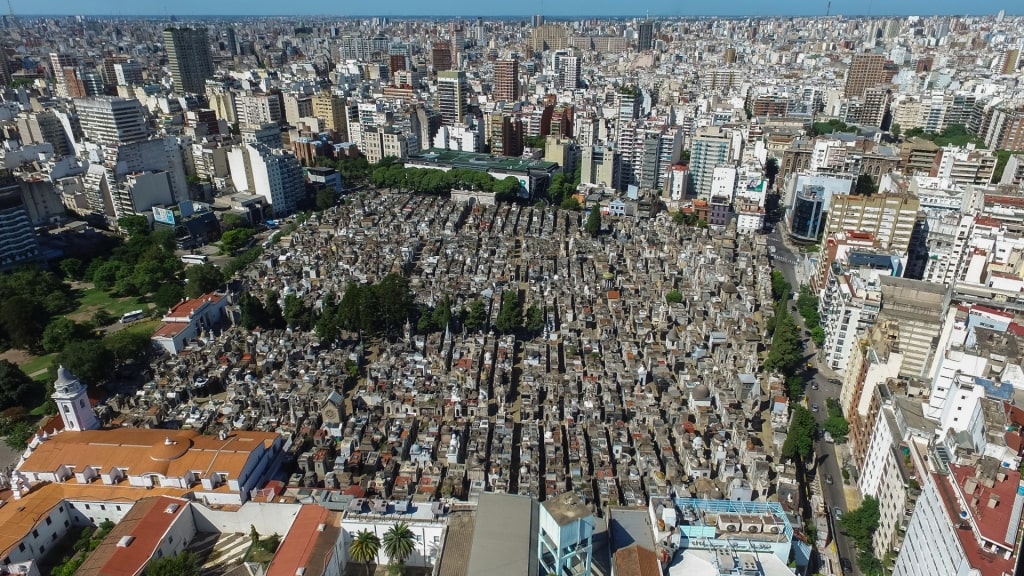
Recoleta
Famed for its historic and beautiful cemetery, this is the most affluent neighborhood in Buenos Aires. Its broad avenues and grand apartment buildings may remind you of Paris or Madrid.
The family vault of Eva Perón is the most notable attraction in Recoleta, but it’s not the only one. For example, Libreria El Ateneo Grand Splendid, a former theater in Belle Epoque style, may now be the world’s most beautiful bookshop.
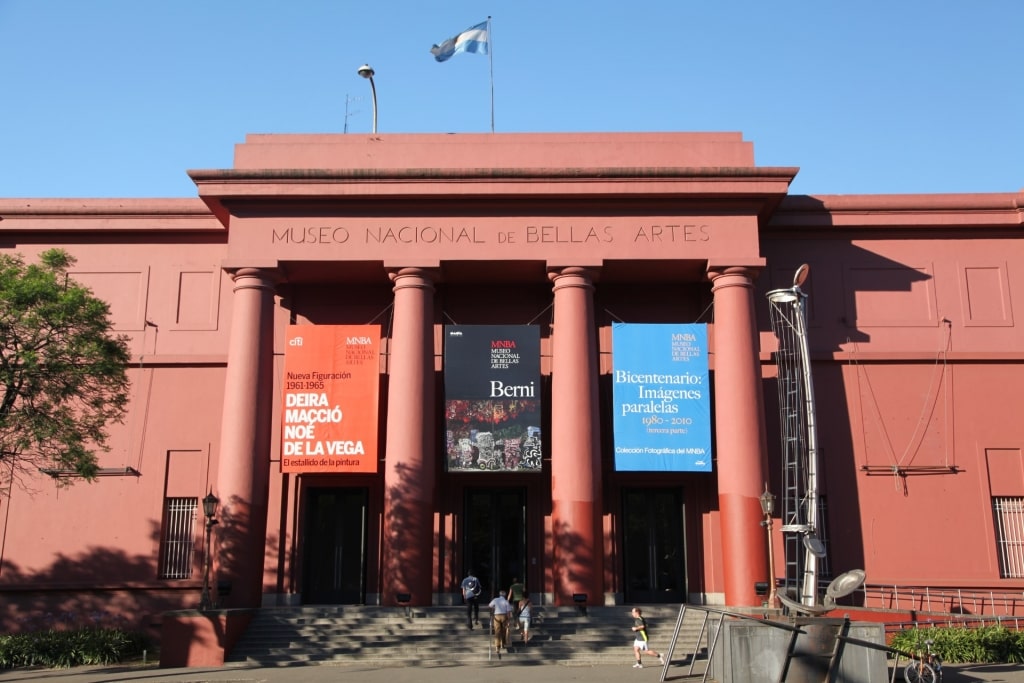
Museo Nacional de Bellas Artes Photo by Liam Quinn on Wikimedia Commons, licensed under CC BY-SA 2.0
Museo Nacional de Bellas Artes, the national gallery of Argentina, is a must-visit if you have any interest in art. It holds work by Spanish artists such as Goya, and Ribera, as well as the likes of Monet and Van Gogh.
You’ll find a much younger art scene—Recoleta is home to several universities—at Centro Cultural Recoleta, which showcases emerging local art. Pop in to see a contemporary dance show or an exhibition by the next big name.
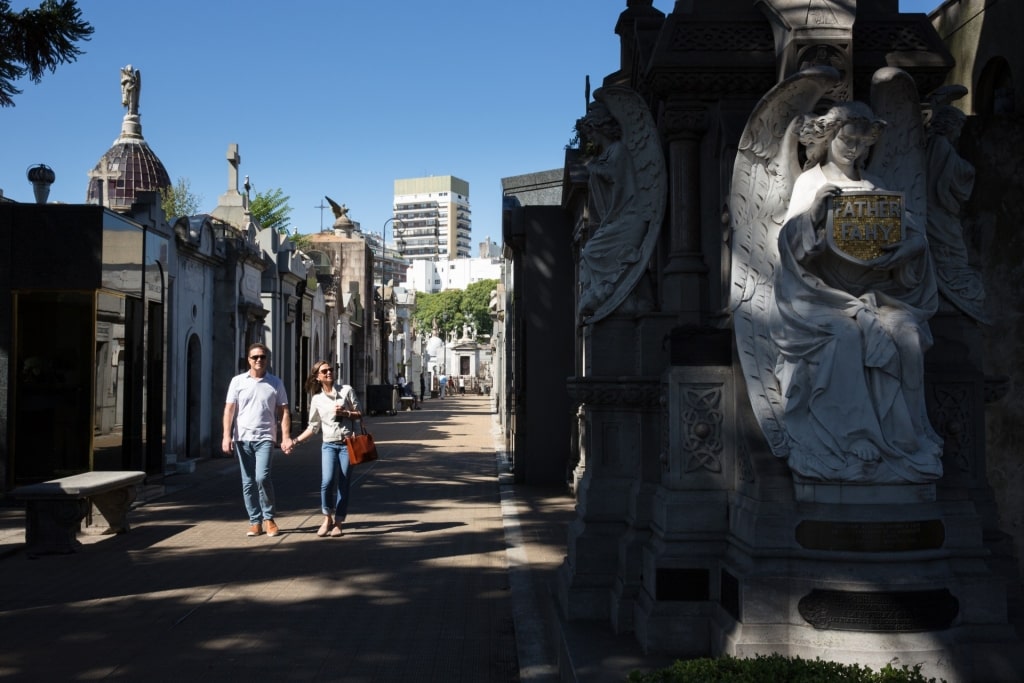
Recoleta Cemetery
In terms of art, particularly sculpture, Recoleta Cemetery has its own style, and it’s one of the most famous landmarks in South America. After the almost-obligatory pilgrimage to see Evita, it’s always worth a walk among the many angels, madonnas, and other more poignant figures adorning its graves.
Back among the living, you’ll find the many wealthy residents support a wide choice of top-end restaurants. In the evening, dinner doesn’t start here until 10pm, but lunch is a much more flexible, leisurely affair.
Belgrano
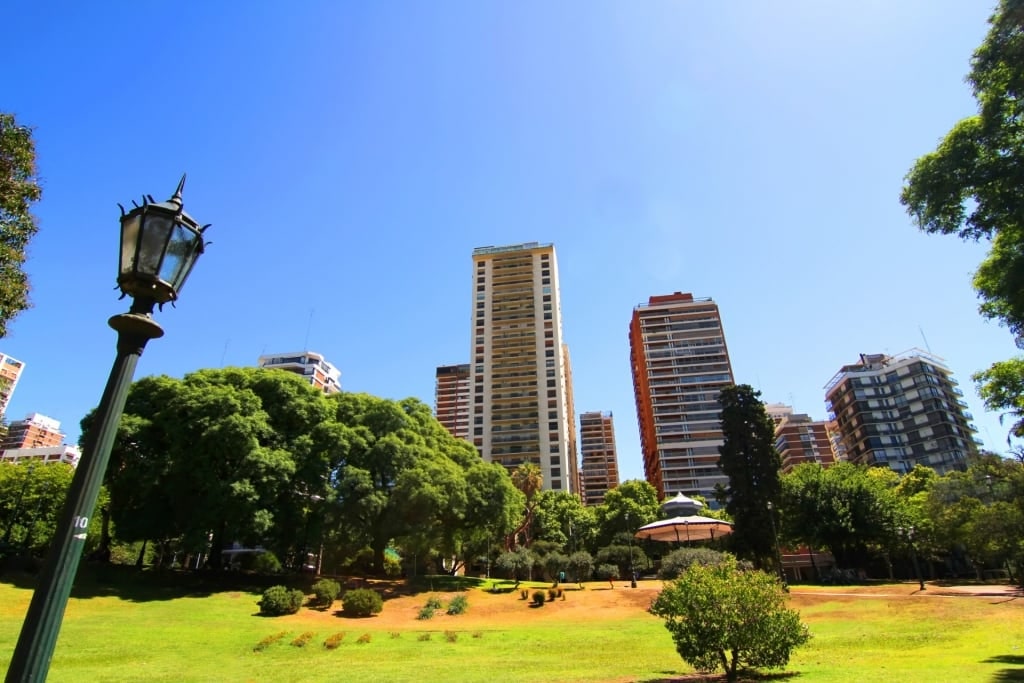
Belgrano
One of the largest Buenos Aires neighborhoods is named for General Manuel Belgrano, who created the Argentine flag. It’s a quiet upper and middle-class residential area, popular with embassies and blessed with lovely parks.
For visitors, its attractions range from the city’s popular Chinatown to ornate churches and some interesting small museums. You’ll also find many grand mansions to admire on walks along shady cobbled streets.
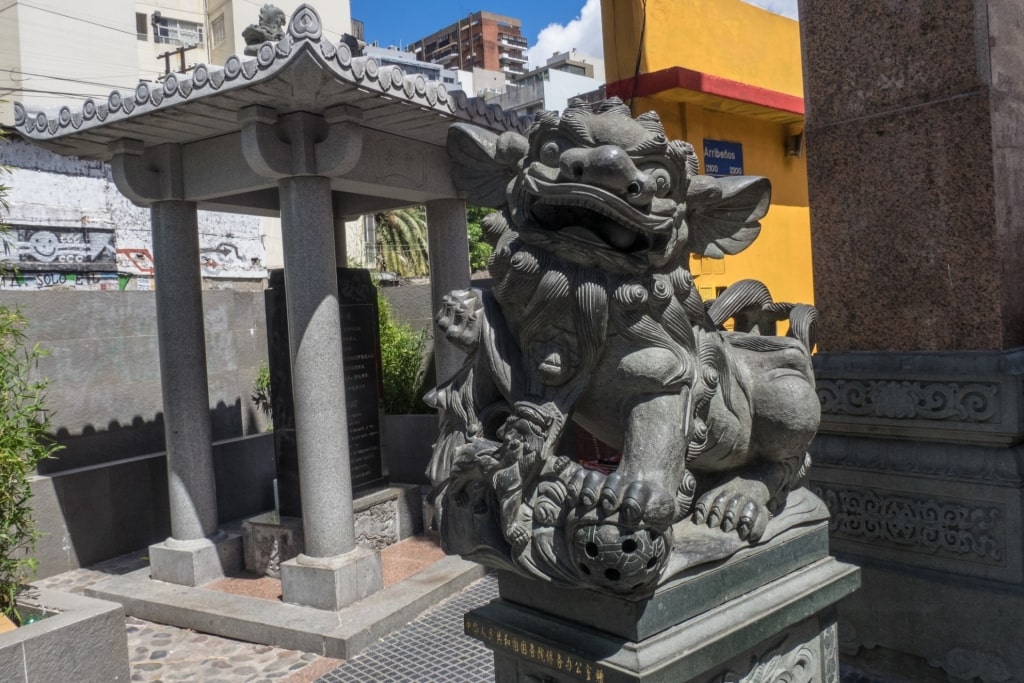
Chinatown, Belgrano
The colorful Chinatown, next to the Belgrano station, is home to a local Asian community that includes Koreans and Japanese. The shopping and restaurants here are excellent.
The Larreta Spanish Art Museum is worth a visit for its beautiful Andalusian garden, as well as the impressive building itself. The collection includes ceramics and furniture, and, as the name suggests, Argentina’s best Spanish art.
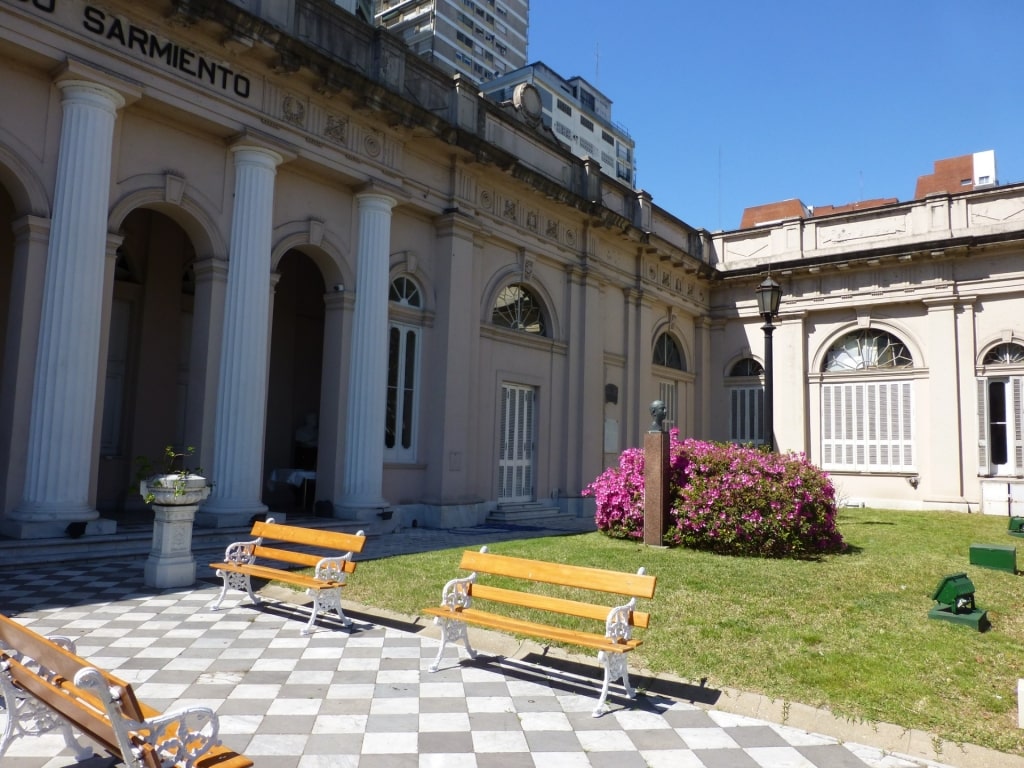
Sarmiento Historical Museum Photo by Banfield on Wikimedia Commons, licensed under CC BY-SA 2.5 AR
The Sarmiento Historical Museum is an Italianate building that once housed the government. Dedicated to the memory of a former president, it’s a treasure trove of 19th-century furniture, crockery, glassware and silverware.
The Parish of the Immaculate Conception (better known as “La Redonda”) is a circular Renaissance-style church, highly decorated inside. The plaza in front, with its sculpture of General Belgrano himself, has a craft fair every weekend.
Villa Crespo
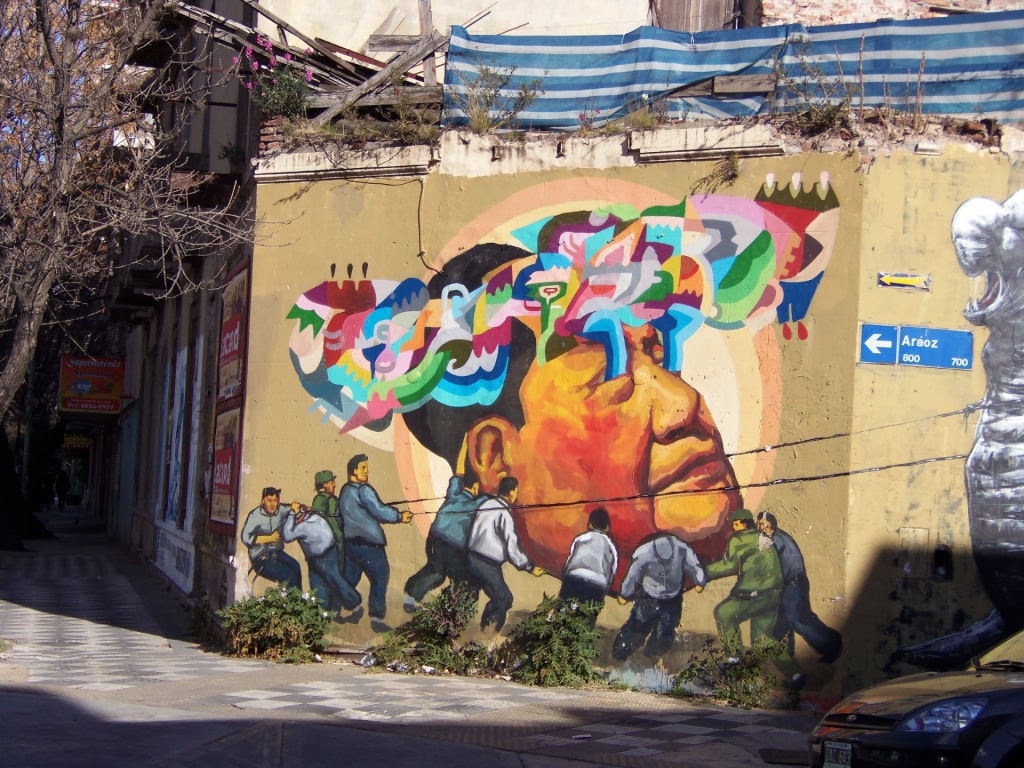
Villa Crespo Photo by Elliot Harmon on Wikimedia Commons, licensed under CC BY 2.0
Bordering Palermo, Villa Crespo is benefiting from the high prices of its upmarket neighbor. Artists and coffee shops are helping make this neighborhood an up-and-coming clone of Palermo.
However, its unique character shines through in touches such as the blue and yellow-painted walls. That’s the colors of the local soccer team, Club Atlanta, named for Atlanta, Georgia.
Villa Crespo is a solid middle-class neighborhood, with many good restaurants. Once the center of the city’s Jewish community, many still offer Jewish, Armenian and Middle Eastern cuisine.
A landmark is Café San Bernardo, founded in 1957, and open 24 hours a day until a few years ago. “El Sanber”—now famous as a pool hall—was recently declared a site of cultural interest for its tango history.
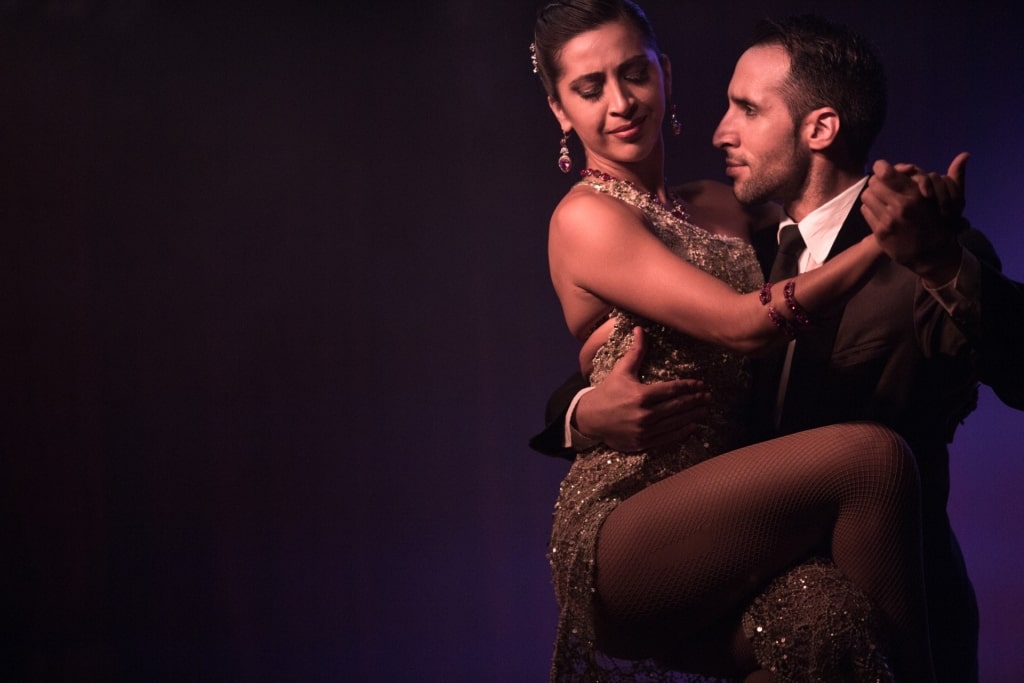
Tango
Tango is a quiet passion here, more authentic than the flashy shows often aimed at visitors. Venues such as Salon Canning or La Viruta attract dancers from all over Buenos Aires—and the world.
This is also the best neighborhood in Buenos Aires for the country’s fabled leatherwork, with a major leather district along Murillo Street. You will find everything from wallets to leather furniture, but note that many shops are shut on Saturday, the Jewish Sabbath.
Read: Best Countries in South America to Visit
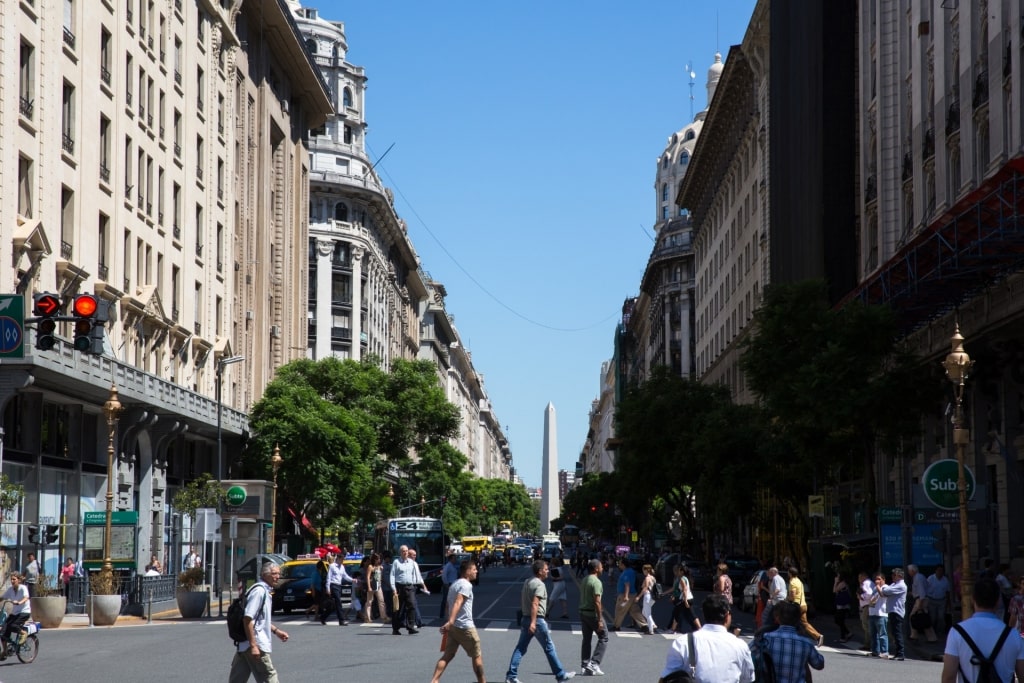
Florida Street
Inspired to dance tango—or just watch—in one of Buenos Aires’ neighborhoods? Browse our cruises to and from Buenos Aires to book a vacation that will sweep you off your feet.
